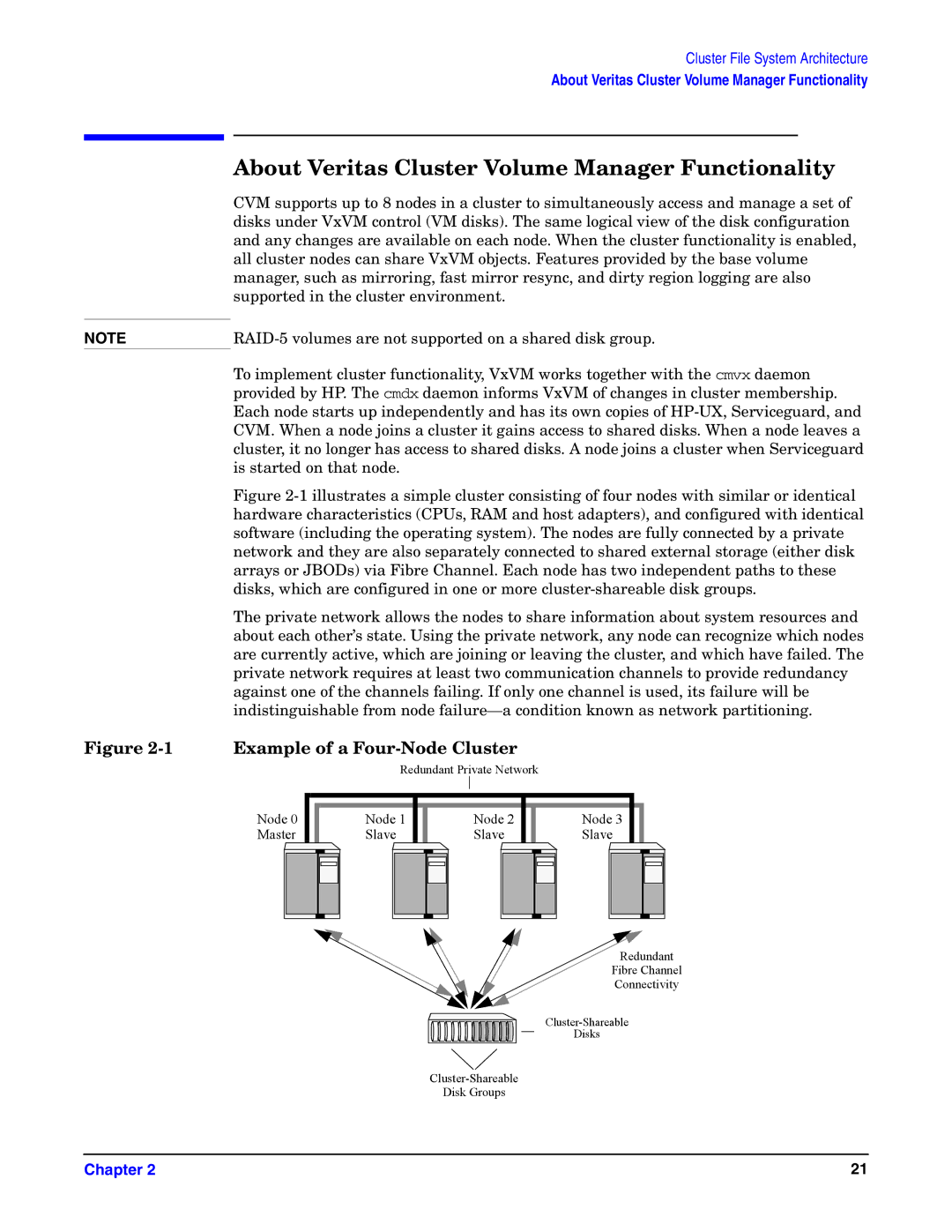
NOTE
Figure
Cluster File System Architecture
About Veritas Cluster Volume Manager Functionality
About Veritas Cluster Volume Manager Functionality
CVM supports up to 8 nodes in a cluster to simultaneously access and manage a set of disks under VxVM control (VM disks). The same logical view of the disk configuration and any changes are available on each node. When the cluster functionality is enabled, all cluster nodes can share VxVM objects. Features provided by the base volume manager, such as mirroring, fast mirror resync, and dirty region logging are also supported in the cluster environment.
To implement cluster functionality, VxVM works together with the cmvx daemon provided by HP. The cmdx daemon informs VxVM of changes in cluster membership. Each node starts up independently and has its own copies of
Figure 2-1 illustrates a simple cluster consisting of four nodes with similar or identical hardware characteristics (CPUs, RAM and host adapters), and configured with identical software (including the operating system). The nodes are fully connected by a private network and they are also separately connected to shared external storage (either disk arrays or JBODs) via Fibre Channel. Each node has two independent paths to these disks, which are configured in one or more cluster-shareable disk groups.
The private network allows the nodes to share information about system resources and about each other’s state. Using the private network, any node can recognize which nodes are currently active, which are joining or leaving the cluster, and which have failed. The private network requires at least two communication channels to provide redundancy against one of the channels failing. If only one channel is used, its failure will be indistinguishable from node failure—a condition known as network partitioning.
Example of a Four-Node Cluster
Redundant Private Network
Node 0 |
Master |
Node 1 |
Slave |
Node 2 |
Slave |
Node 3 |
Slave |
Redundant
Fibre Channel
Connectivity
Disks
Disk Groups
Chapter 2 | 21 |
